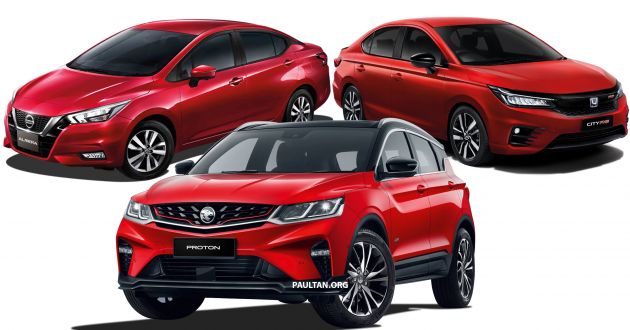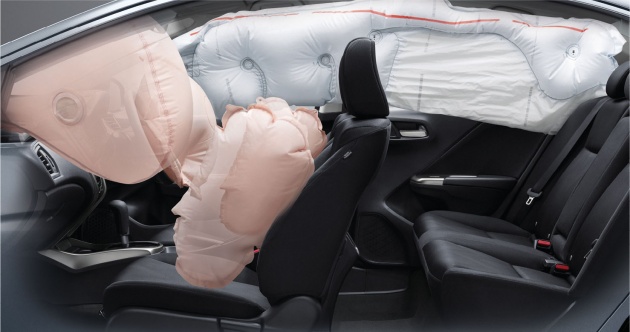Malaysian car buyers have come a long way in the past ten years or so. From only caring about looks, performance and spaciousness, we now have a demanding consumer base that asks more pertinent questions regarding safety features (i.e. how many airbags does it have? Does it have electronic stability control? What about active safety features and crash safety ratings?).
That’s great to know, and in general, car specifications in Malaysia have seen gradual improvements over the years. It wasn’t too long ago that a brand new Toyota Camry, a D-segment sedan, was sold here without any form of electronic stability control (ESP, ESC or VSC, whatever you want to call it).
Now, not only does the latest Camry have ESP as standard, but it also gets the full suite of active safety features, complete with autonomous emergency braking (AEB), adaptive cruise control, lane keeping assist and blind spot monitor. In fact, pretty much the entire Toyota range in Malaysia is fitted with ESP as standard now, down to the cheapest Yaris. Only the long-in-the-tooth Avanza is an exception.
The same goes with more basic safety features such as airbags. A few years back, you’d need at least a C-segment vehicle to have anything more than two airbags, but now, even the Perodua Myvi gets at least four. The Kia Picanto, technically an A-segmenter, gets six airbags. Similarly, AEB and other active safety features were once exclusive to high-end premium cars, and now they’re available on the Perodua Axia and Bezza.
But it’s not all roses, obviously, because while we have seen great advancements in most areas, some things have stayed the same. Even with Malaysian car buyers being more demanding of safety equipment in new cars, quite a few car brands in the country still have the habit of offering compromised safety kit on lower, cheaper variants.
I can forgive older models that were launched a few years ago. It was a different time, then. The Proton Iriz, for instance, only offers two airbags in Standard and Executive forms, but let’s not forget that it being offered with six airbags in Premium guise was a landmark moment for the industry in Malaysia way back in 2014.
Back then, the Perodua Myvi only had two airbags and no ESP, even in its most expensive variant. It was not until the end of 2017 that it matched the Proton while moving the goalpost even further with the inclusion of AEB. Stability control was also fitted to the Myvi and added to the Axia and Bezza more recently. A great byproduct of competition (however lopsided) – all parties improve.
But back to the matter at hand, we still have brand new car models launching with compromised safety kit here and now in 2020. Of the three biggest launches in the past month – the Proton X50, Honda City and Nissan Almera – all have fewer airbags in the lower variants compared to the more expensive variants.
The X50 Standard and City S and E variants miss out on side curtain airbags that are fitted on the rest of their respective ranges. More than a mere reduction of airbag count, this also means that rear passengers are not protected by airbags at all in severe collisions. The four airbags – dual front and side – only serve the driver and front passenger.
The base Almera VL, meanwhile, only gets two airbags versus the VLP and VLT, with the side and curtain bags stripped out. So here the safety of both the front and rear occupants are compromised in the base model. Now, I should point out that Nissan offers AEB as standard across the range for the new Almera, which is absolutely fantastic – an unprecedented move that other car brands in Malaysia should follow from now on. But giving just two airbags for the base model is still a bad move in my book.
In the B-segment sedan class, Toyota has become the unlikely hero here. From lagging behind in the safety stakes (the Vios was sold with no more than two airbags and no ESP as recently as 2016), the Vios now offers seven airbags as standard even on its cheapest model.
Some of you may want to point out the Mitsubishi Xpander, which is also being launched soon with just two airbags for the sole variant. However, the story is a little different for the Xpander since it was designed to offer no more than two. So it’s not the case of Mitsubishi Motors Malaysia intentionally choosing to offer just two airbags to lower the cost or price – the option of having more airbags simply does not exist.
This applies to quite a few other models in Malaysia, such as the Perodua Axia/Bezza, Proton Saga, Honda BR-V and Toyota Avanza. Since the root of the cause is pre-determined and not a conscious choice, I’ll give them a pass here. Not ideal, but they’re not entirely to blame either.
The same leeway cannot be afforded to car brands that are deliberately offering substandard safety features on the cheaper versions of their brand new cars. It just should not happen any more. Period.
When asked about it, most brands give the usual excuse of “creating product differentiation” and “offering what customers want.” Well, to the former, I say there are better ways to differentiate the variants other than compromising safety. To the latter, if you have customers that think they don’t need the extra airbags, it’s then your responsibility to educate them otherwise.
The way I see it, the general car buyers should not be given a choice when it comes to safety. Basic safety is a necessity, a bare minimum – it should never be an option.
Take the Proton X50, for example. Instead of cutting down on safety to create product differentiation between the Standard and Executive variants, Proton could just have easily given it a cheaper set of headlights or smaller wheels, just like it did with the X70 Standard. The airbag count should not have been touched. Same goes with the City and Almera, too.
And while I did say that I’d give older models a pass here, a few special cases do need to be brought to light. The Perodua Axia G at RM32,485 should never have existed, not when the ESP-equipped Axia GXtra is priced so closely at RM33,940. Why offer customers the choice here at all? Drop the cheaper version and they’d be forced to buy the safer product – there are no other options in this price range anyway.
Proton is equally guilty here with the Exora, as both variants now have compromised safety kit – the ESP-less Exora Executive should no longer be on sale (the same goes for all seven-seaters without ESP), while the Exora Premium had its airbag count inexplicably slashed from four to two back in 2017. A decision was made here to reduce safety kit in favour of affordability – a wrong one to my eyes.
If you’ve made it this far, thank you for reading my ramblings. I really do appreciate it.
Please, car brands in Malaysia, stop offering compromised safety kit on cheaper variants. You’re better than that. And dear Malaysians, it’s time to show them that we know better, and that we will no longer accept cars with sub-standard safety kit from now on. We deserve better than that.
Related Cars for Sale on
Source: Read Full Article



















